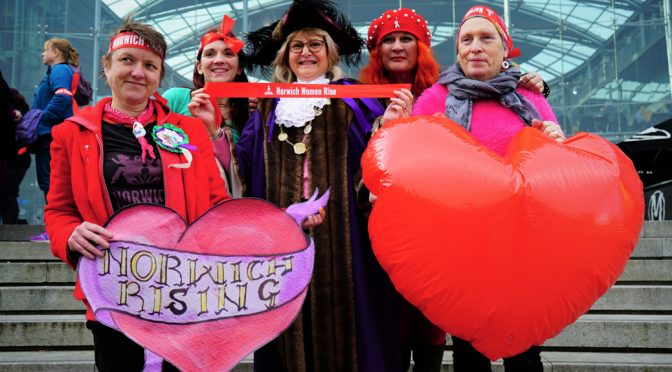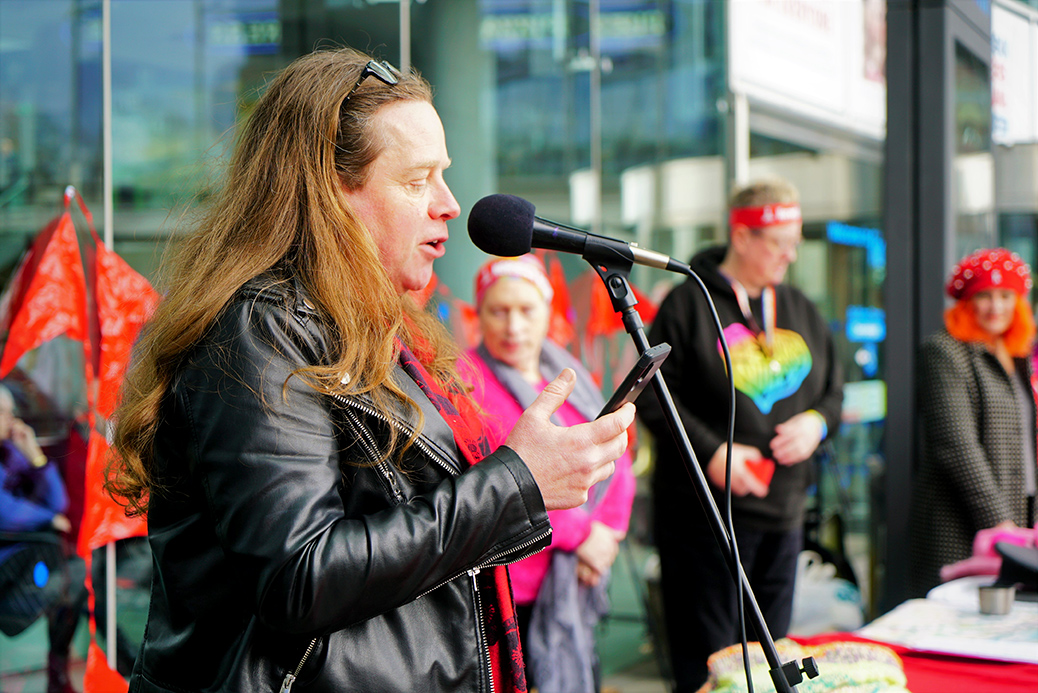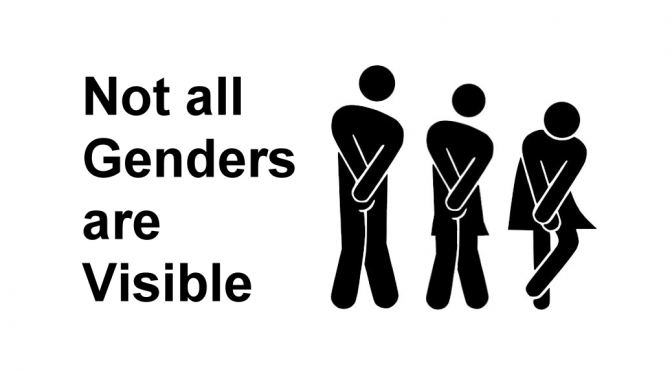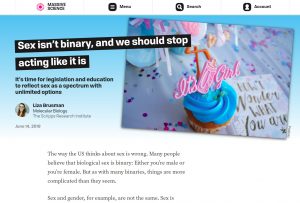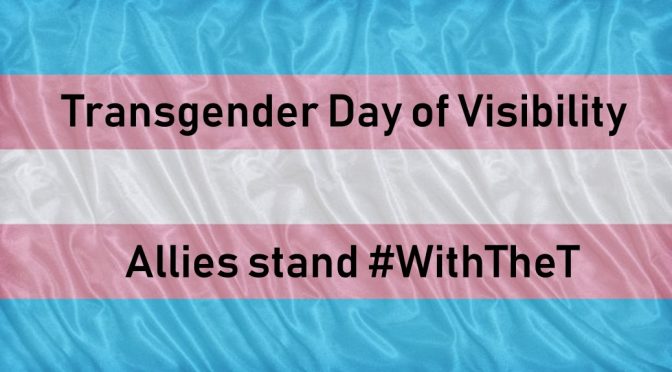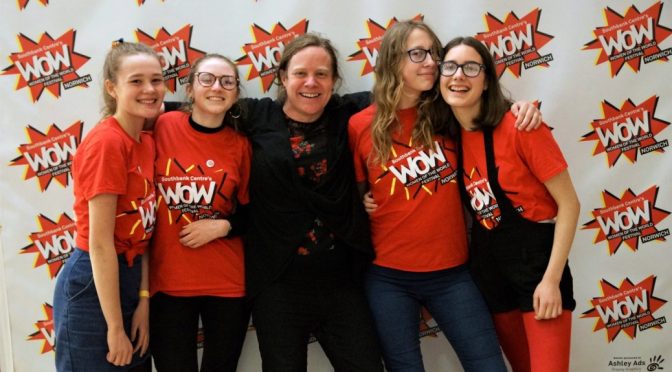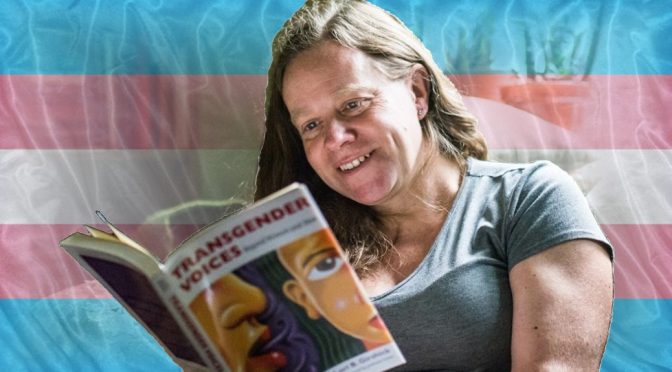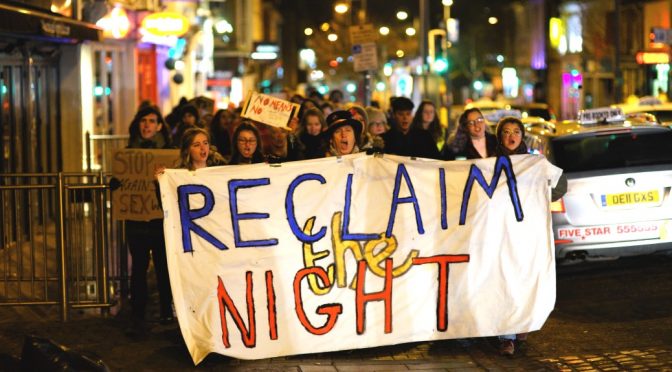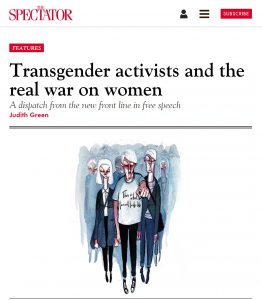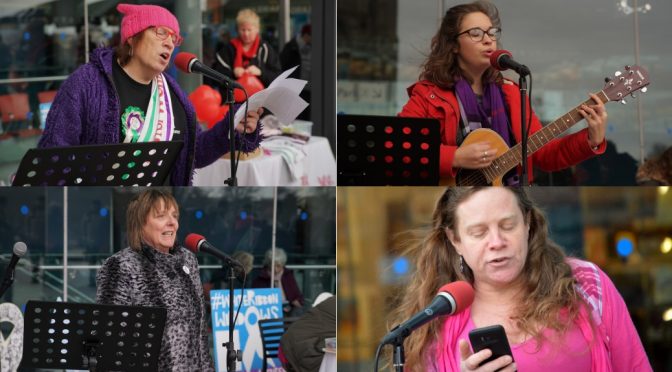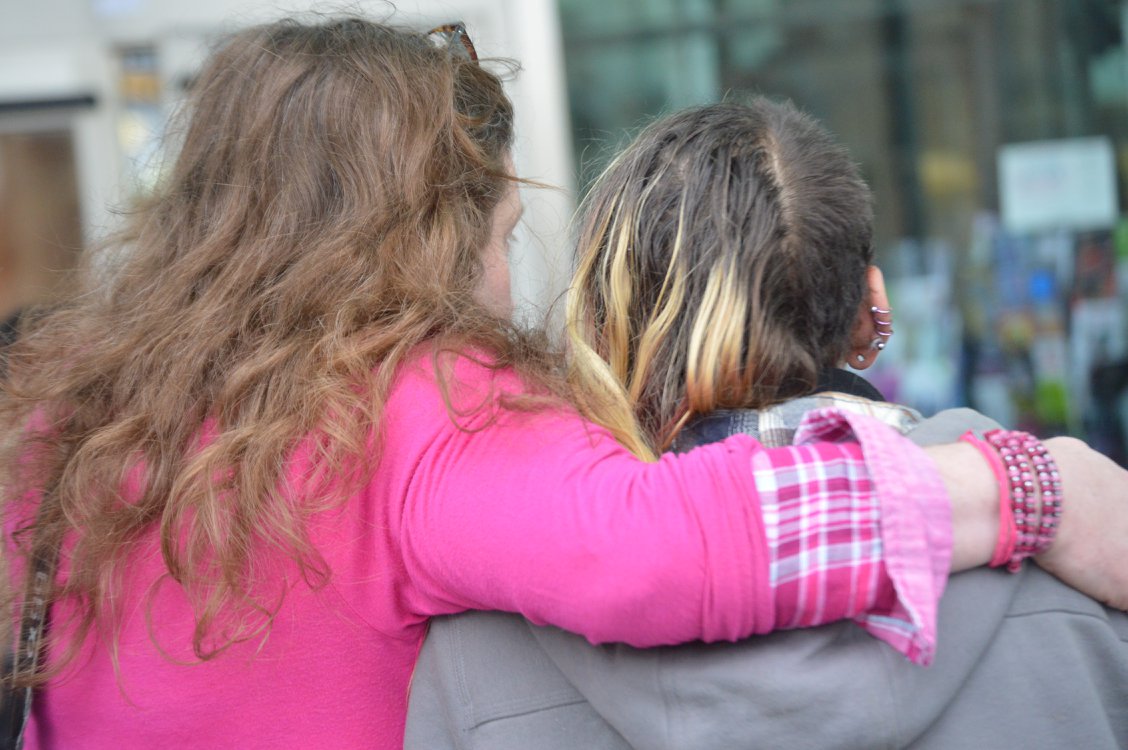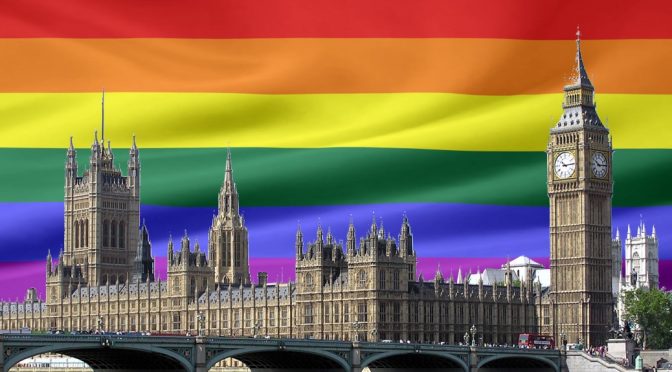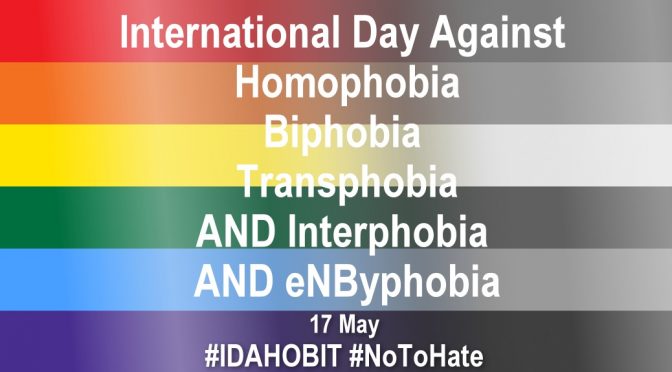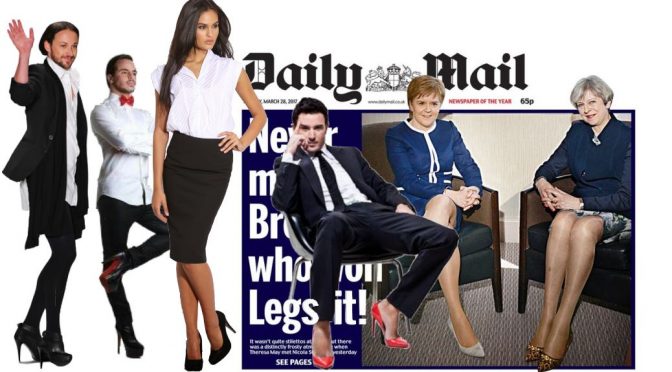Category Archives: Feminism & Gender
Neither the Courts nor Twitter should decide anyone’s Sex or Gender
The court of social opinion or social media at least is no more relevant than an employment tribunal in determining someone’s gender. It is a reasonable place, though, to decide on the application of the Equality Act (2010) which protects both against sex discrimination and gender transition. Respecting someone has little to do with the biology of sex and presentation of gender.
The Maya Forstater case in which she lost her job (non-renewed contract) was down to her “offensive and exclusionary” language in tweets questioning government proposals to allow people to self-identify as the opposite sex.
“My belief … is that sex is a biological fact, and is immutable. There are two sexes, male and female. Men and boys are male. Women and girls are female. It is impossible to change sex. These were until very recently understood as basic facts of life by almost everyone.” – Maya Forstater
Sex as “Biological…immutable” comes straight out of Trump’s US proposals to lock down sex as genitals by or at birth and only challenged by genetic evidence to the contrary.
Judge Tayler’s ruling kicked off responses from some expected and unexpected sources.
Dress however you please.
Call yourself whatever you like.
Sleep with any consenting adult who’ll have you.
Live your best life in peace and security.
But force women out of their jobs for stating that sex is real? #IStandWithMaya #ThisIsNotADrill— J.K. Rowling (@jk_rowling) December 19, 2019
Sex is indeed real and at first sight mostly binary. Gender is also a reality and mostly a bitch. By that I mean, it binds us, boxes us, oppresses us whether by social constructs and constraints or psychological identity.
Of course trans lives matter. And yes, trans rights are absolutely human rights.
— Neil Gaiman (@neilhimself) December 20, 2019
Of course, sex/gender terminology, spaces, constructs, and Trans/TERF* wars won’t be solved by two giants of fiction.
[*TERF=Trans Exclusionary Radical Feminist, seen as a slur-term by so-called TERFs who prefer Gender Critical Feminist or just Feminist]
Facts, on the other hand, will always get in the way of ideology. Just as science fiction is free from the constraints of science fact, so, too, sex and gender constructs can be made in our own or society’s image, and no two humans let alone scientists, trans activists, or gender critical feminists, will entirely agree without subtle nuanced differences.
Reproductive sex (based upon binary gametes) is not the same as lived gender nor even outward sex. I have plenty of non-trans friends – some even happy being called cisgender (BTW saying you are not CIS means you are TRANS, lol!) whose outward sex may not reflect their reproductive gametes. One can be born with external female genitalia ie vaginal labia and internal male gametes ie testes. Incredibly rarely, one can also have external male genitalia and gametes and have an internal womb. These exceptions, it is claimed are disorders and dysfunctions that do not undermine sexual dimorphism – at a reproductive level (outside of laboratory help) this is true – it still takes two to tango, an egg and a sperm (after fighting off rivals and swimming faster whilst being healthy and fertile).
Sex, though, can be observed and assigned objectively from a series of outer characteristics though not necessarily accurately (mine took an hour or so to be sure at birth, small furry animals are equally risky to identify soon after birth!). Those outer characteristics may not match the inner when you come to try and have a family, then you may discover you are not just one of two gamete options (which could rarely be undifferentiated eg Mixed Gonadal Dysgenesis), but 22 chromosome possibilities from XX & XY (or even both in the same body) to XO, XXY to XXXXY, or that your body was insensitive or hypersensitive to or had delayed or early responses to sex hormones.
hi, I’m an evolutionary biologist & an #intersex person! sex is not binary in a TON of species, inc. vertebrates, mammals, & us. some ppl like me don’t make eggs or sperm. & intersex =/= disorder, just another biological way of being. sex variation in humans is substantial! https://t.co/q7rTUSbgY3
— Claudia #TeamTooth Astorino ✨✨ (@claudistics) December 19, 2019
So whilst we are fixated with just two boxes there are many ways we can be sexed. Even many biologists, though not all, see sex as a spectrum.
“Biologists may have been building a more nuanced view of sex, but society has yet to catch up.” – Claire Ainsworth
Sex isn’t binary, Liza Brusman, Molecular Biology, MassiveSci
Gender Isn’t Binary. Sex Isn’t, Either, Alexandra Kralick, Biological Anthropologist (Sex Differences), Slate
Sex is anything but binary, Simón(e) D Sun, Neuroscience, Scientifc American
Two sexes is simplistic, Claire Ainsworth, Developmental Biologist, Nature
Why Sex Is Not Binary, Anne Fausto-Sterling, Biology and Gender, NYT
Sterling, indeed, recognises layers upon layers of sex, saying that:
“It has long been known that there is no single biological measure that unassailably places each and every human into one of two categories — male or female.”
She lists many of the following as a series of often non-binary sex markers:
- Chromosome sex (XX, XY and 20 others)
- Foetal gonadal sex (testes or ovaries)
- Foetal hormonal sex (androgens and estrogens)
- Foetal internal reproductive sex (uterus, cervix and fallopian tubes or vas deferens, prostate and epididymis)
- Foetal external genital sex (vagina and clitoris or penis and scrotum)
- Birth genital sex assignment (1cm rule!)
- Birth gender socialisation (pink and blue, dolls and dumpster trucks)
- Brain sex (though disputed neuroscience hormones affect brain)
- Pubertal secondary sex development (hormones and morphology)
- Post-pubertal sex or gender identity
- Gender expression and ‘performance’ (Judith Butler)
Add to nature’s diversity, society and nurture, our gendered response to our sexed state and environment and very soon the apparent dimorphic binary breaks down. We may be born one of two sexes with some 1-in-100 having physical intersex variations but very soon in life we are one of several genders. I’m often asked how many sexes or genders there are? I usually reply: “At least two sexes and around seven billion genders”, since we all interpret our gender in a sexed world differently.
Professor Robin Lovell-Badge, head of the laboratory of stem cell biology and developmental genetics at the Francis Crick Institute, who discovered the gene that determines sex in mammals, said: “In the UK, I think most [people] would use ‘sex’ to refer to anatomical appearance and ‘gender’ to ways of behaviour.” To a scientist, he said, anatomy could appear male, female or somewhere in between, but a man who transitioned could be said to change sex. – The Times
Sex and gender should not be policed in a purely binary way. Not all sexes and genders are visible or divisible down toilet door lines and there’s scant evidence of abuse, the opposite if anything.
What’s in a pronoun? Mere politeness and respect that need not change your understanding of science (which may be different from the next person’s). Everyone has the right to privacy, safety, and respect and that means coming up with binary, unisex and non-binary spaces where appropriate that meet everyone’s needs and put nobody at risk. Risk assessments should be done on people that perpetrate not how people pee. A high vis jacket and a mop will get you into the ladies loo without any need to put on a dress.
The whole conversation around sex and gender identity has become more toxic than the blackwater bilge in septic sewage waste. Let’s discuss the science of sex and gender – their construction, oppression and expression – but separate from how we treat human beings with respect and dignity.
Equalities law is clear, even if we’re going to be discussing sex and gender until the end of time!
Allies & Mutual Respect #WithTheT on Transgender Day of Visibility (TDOV)
I’ve written about the Transgender Day of Visibility (#TDOV) – meant to be a positive and the more negative memorialised Transgender Day of Remembrance (#TDOR) most years. Since 2014’s “transgender tipping point” and 2015’s year of transgender visibility, we now seem to be getting too much visibility and attention and not necessarily of a good kind. For with the visibility has come the vitriolic verbal violence that says we should go back into the closet and certainly not share one with cisgender people that match our gender identity. By that I mean trans women should not be seen in the same spaces or private areas (toilets, changing rooms, gyms, pools etc) as “real” “biological” women. Of course, the flipside is rarely addressed, i.e., whether trans men should be allowed in male gyms or loos and which instead silently suggests they should know their place and continue to use women’s facilities with their beards, biceps and deep voices.
I’m not going into the ‘debates’ – I do that enough already with so-called ‘TERFs’ in person, privately, and online. I do, however, try to listen to concerns and allay them when overwhelmingly they are misplaced. That is not to say that the fears don’t feel real or come from personal but perhaps projected experience. The problem of men’s violence against women and girls (VAWG) should not be erased in the fight for trans equality and respect. Equally, men’s VAWG should not be projected onto all or any trans people as some kind of 1980s homosexual moral panic 2.0.
Mutual Respect
Rather, I want to talk about allies and mutual respect. Firstly, the latter. For many years I co-ran with some University feminist academics and local LGBT thinkers a Gender and Sexuality discussion group. There was never any trans exclusion but what did come up, very occasionally, was the idea that some trans people still had traces of male privilege and/or needed to go on a Feminism 101 induction course., and that we hadn’t experienced female oppression. It was never denied that we hadn’t experienced our own oppression and bullying for not conforming to gender construct norms. So our battle against gender oppression overlapped but was not the same. Being able to separate the personal from the analytical enabled me to discuss this without ever getting offended, though the first time I was called privileged it did hurt as it never felt that way, and I regard most privilege as relative, indeed being cisgendered is to have a presumed privilege of never having doubted one’s gender or suffered from gender dysphoria and its mental health associations.
Passing Privilege is something that many trans people long for but is not exclusively a trans issue. At recent gender critical discussions, I was somewhat amused to discover that trans people were accessing gender-aligned toilets with ease but some cisgender women were being questioned by other women for using toilets that didn’t seem to match their non-femme presentations. Just going to show that can’t always spot a trans person at 100 paces! I’ve never been questioned in a toilet except the men’s!
As to mutual respect, though, I’ve always felt that being accepted as female (actually I identify as non-binary but we don’t have our own changing rooms yet!) does not mean asserting that as a right but rather a privilege. The Equality Act (2010) and Gender Recognition Act (2004) may say that we should be treated equally and with respect but respect is also earned and the privilege of sharing same-sex spaces as ‘re-gendered’ individuals should be treated with gratefulness and grace not some sense of entitlement. If society follows the law then it does so not by waving GRCs or EA rules in people’s faces but by a growing sense of not just tolerance and acceptance but welcoming inclusion. An inclusion that, to me at least, comes from respecting the people whose space you are entering and sharing. Yes, we can exercise our rights but some rights are also won by mutual respect, not by a muscular assertion of them. I’ve only ever gone into women’s spaces that I felt welcome in, irrespective of what the law says. Most times I was invited, other times I enter cautiously and tread gently to see how I would be received.
#WithTheT
It is both encouraging and sad how many #WithTheT hashtags are doing the rounds. It is depressing how necessary it has become after the lesbian radical feminist #GetTheLOut stunt at Pride in London this year. It was followed by #LwithTheT, #BwithTheT and most recently #GwithTheT and #PrideWithTheT. I’ve even seen and appreciated #MPwiththeT and PeerwithTheT proving that Parliament has taken a few minutes off from Brexit!
At recent gender and trans discussions and events, I have actually found the issue was less that men or trans were vehemently asserting their views but instead two different groups of feminists were arguing over whether it was sisters or cisters, whether biology should be destiny or diversity, and over what form inclusion and intersectionality should take.
Now, more than ever, is the time not for Trans Visibility but for Allies Visibility and for that I thank them because it is indeed encouraging how many there are. They are the many, the majority, social attitudes have changed. Whether they are ‘cishet’ supporters or the #LwithTheT, we need to be allies not enemies, our rights were won by standing together be they the black trans women and queens standing with – or indeed starting, the early gay riots and Prides, or the LGBT movement standing with the miners or on other shared political platforms.
The ‘TERF’ kickback, the no LGBT education in faith schools, the occasional cases of trans violence upon cis (and more frequent vice versa cases) – these are all thankfully minority pockets of non-acceptance or abuse. We do live in better times and we should celebrate progress and the far more intersectional and diverse society we live in and how most of us get on and respect each other. I’m hoping the so-called ‘War upon Women/Trans’ (delete as appropriate depending which side you are on) is a passing hiccough in the march for LGBTQ acceptance and inclusion and treating each other as humans not labels or threats. History is littered with exclusion but the future is surely about inclusion.
International Women’s Day, Positively Human
In the current febrile atmosphere surround transgender women in single-sex spaces and indeed both trans and intersex trait women in sport, today – International Women’s Day is a good day to celebrate all women. Indeed, one of my preferred yet also subtle ways of being inclusive has been the addition of a plus sign at the end of many Women’s events, groups and societies. Women+ is such a (pun-intended) positive way of demonstrating inclusivity and intersectionality without erasing the word woman.
On a side note, etymologically woman is not a modification of male man (since ‘man’ meant ‘human’), neither is female of male. Both the modern word man and woman derive from separate roots. In Old English, wīfmann meant “female human” not female man. So the movement to respell woman as womban, womon, wimmin, womyn (Trans exclusive) or womxn (Trans & WOC inclusive) is to some extent misguided, linguistically at least to language pedants!
I like International Women’s Day because the only adjective added is international – inclusive of all women the world over. It is refreshingly broad in an age of exclusionary defining language such as biological woman, cisgender woman, natal woman, real woman, trans woman or woman defined by vagina, womb, low testosterone, motherhood, violence, abuse or oppression.
“…every female human being is not necessarily a woman; to be so considered she must share in that mysterious and threatened reality known as femininity. Is this attribute something secreted by the ovaries? Or is it a Platonic essence, a product of the philosophic imagination?” – Simone de Beauvoir, ‘The Second Sex’, introduction (1949)
Not every woman has the same experience and I’m not talking trans here, but the individual diversity of female lived experience. Some women have privilege, some at 21 are billionaires (Kylie Jenner). Some as Ivanka Trump, daughter of POTUS, are out of touch and have said people don’t need welfare and would be happy to make their own way in the world.
If biology – wombs, vaginas etc, is the root of women’s oppression why should their definition be rooted in oppression? Why not define by the positive factors of community, sisterhood, inclusion, lifting each other up, social enterprise, leaving no one behind, intersectionality and inclusion.
My response to the following greeting on #IWD on my Facebook wall was this:
Thank you. I feel honoured to be called a woman by women, whether I’m inspirational or not, in the current climate. It’s not an aspect of my identity I’ve used to gain entry to women’s spaces instead I’ve been consistently invited, welcomed, respected and included – and for that, I thank every other woman, most of whom are inspirational to me.
I define as a biological natal real human first, not cis or trans, intersex, male or female, man or woman, non-binary or otherwise.
I want to be known for my humanity, though. I have to admit I see more of that expressed in and by women, but not exclusively so.
Women are not angels, nor devils wearing Prada, they are human. Capable of greatness and also of harm and hurt, like anyone else.
Being a superhero-loving film buff, I found it particularly appropriate to go and see Captain Marvel today, a film in which the world is saved by a woman – without the help of a man, she even talks to other women – not about men, thereby passing the Bechdel test. Without an actual plot spoiler I’ll quote one short dialogue from the film:
“We’ll be back for the weapon”
“The Tesseract?”
“No, the WOMAN”
Take that how you like, I see the positive in it, woman and women’s power for positivity in this world.
I’ll end with a tweet I saw this morning that shouts out to me about the behaviour of some women (“some” RadFems/GC Feminists, “some” Trans etc). It says to me that you don’t raise yourself up by bringing other women down.
We’re growing, we’re finding liberation but there’s still one thing pulling us back- Dragging down other women for their size, style, race, or any other preference. Be confident enough to not walk over somebody else to feel better! More power to us! ❤️#InternationalWomensDay pic.twitter.com/Cjhhd3AkLW
— Radhika Mundra (@radhikamundra99) March 8, 2019
International Transgender Day of Visibility as the Political gets Personal
For Trans People, the Personal is getting very Political
If the personal is political, then being trans has certainly become overly politicised in the last few months. Most transgender people just want to get on with their lives, not poke their heads above the parapet and be overtly public each Transgender Day of Visibility (#TDOV). 2014 was called the “transgender tipping point” and 2015 the year of transgender visibility, but 2017-18 is fast becoming the year of the war on women and trans.
Sex Wars and Gender Recognition
The Gender Recognition Act (2004) aided that for some but not for all since it was not relevant to many transitioning people being mainly a requirement for pre-Equal, well Same-Sex anyway, marriage legal innovation. It is now front and centre of the new battle within feminism(s), the so-called “War on Women”, discussion of who or what is a woman, access to single-sex spaces and support services, and updates to the GRA.
“United We Stand, Divided We Fall”
We divide and misrule at our peril. Surely, to stand on the right side of history is to be on the side of progress towards human rights for all, not resisting them. Fourth-wave feminism understands intersectionality and trans sisters far more inclusively than second-wave feminism. This unfortunate fight is as much a battle within feminisms as it is between genders. Interestingly, just 59% of Mumsnet users call themselves feminists yet many have joined the trans resistance, i.e., are resisting the extension of gender-identity rights.
That said, there are peaceful cooperative ways to discuss legal provisions among those that are affected by the laws. Though, to be honest, since the majority of trans people don’t even bother with a Gender Recognition Certificate (GRC) and have been accessing the most appropriate spaces and services to their gender or stage of transition for years, it hasn’t been a ‘problem’ until now. Equally, over half-a-dozen countries have introduced gender self-ID since 2012 to no known problems.
The UK seems to be unique in perceiving it as a massive attack upon the rights of and risks towards women. It is also tearing the Labour Party apart, much as the current discussion of alleged anti-semitism within it is. The vitriol of calling both trans activists and ‘TERF’s (see below) ‘Fascists’ is laughable since the majority of those fighting each other are Socialists, Marxists, and generally people on the Left of British politics, several of whom have been suspended or ejected from the Labour Party over this issue.
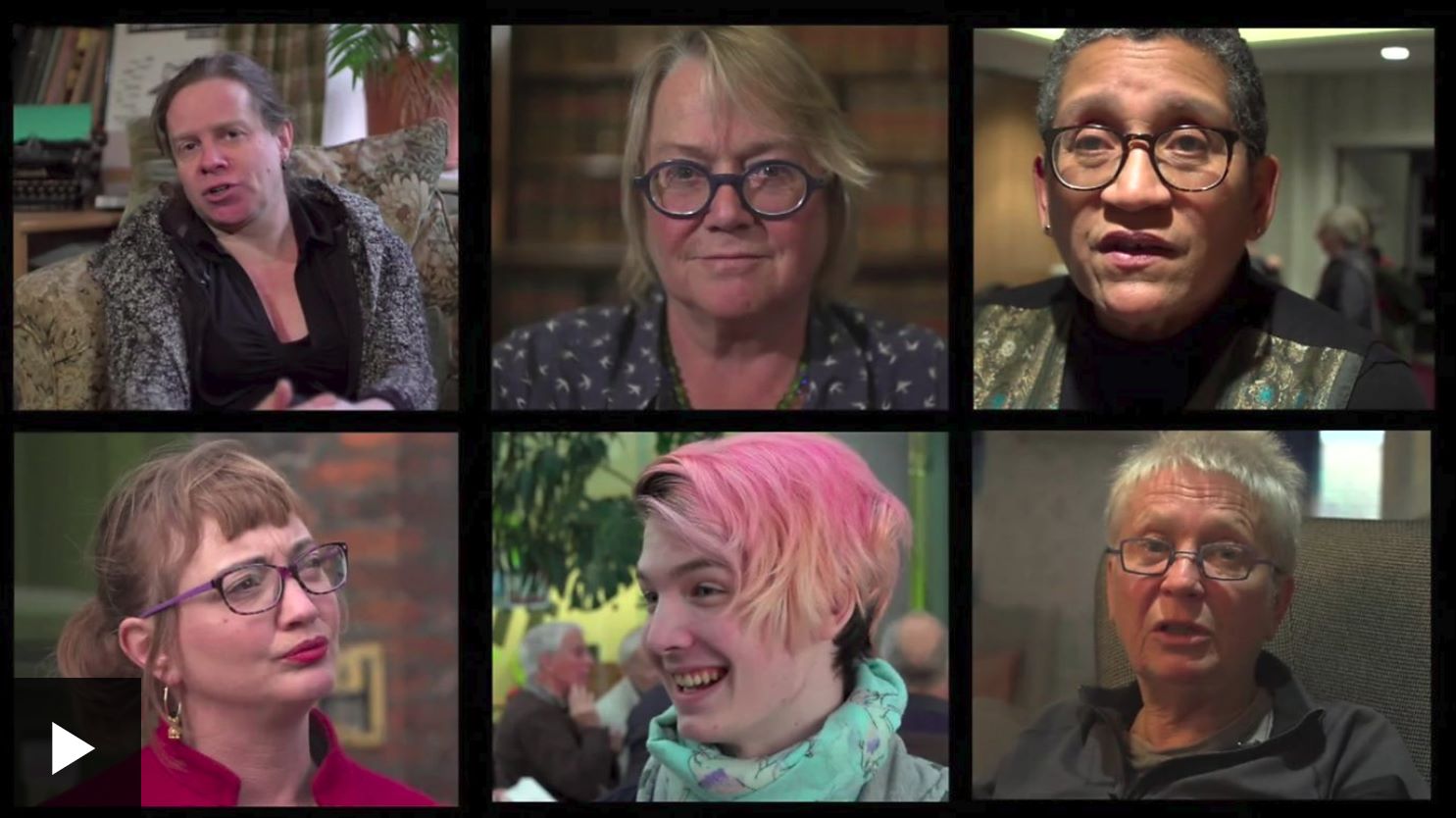
Visible Transgender History
One vocal opponent (aka ‘TERF’ or a Radical Feminist who opposes the inclusion of trans women in female spaces and a term considered a slur by them despite its reasonably accurate abbreviated description) said this week that “Transgenderism wasn’t a thing. It didn’t exist 30 years ago.”
You will of course notice it was only lesbians and gay men. No trans. Transgenderism wasn’t a thing. It didn’t exist 30 years ago. I marched and campaigned against Section 28 as a young lesbian. #WarOnWomen #WarOnLesbians https://t.co/U2LtwA9532
— Anne Ruzylo XX ♀ (@sargesalute) March 28, 2018
That is akin to the Australian MP, Bob Katter, who recently claimed that LGBTI people had only been around for 60 years.
The willful ignorance of the history of transgender, third gender, and gender non-conforming individuals, is astonishing here. Not to mention, the nearly 50-years-ago trans-washing of the Stonewall riots (1969) and the numerous trans women and transvestites involved in protesting police violence and state criminalisation of LGBT people.
“people have been crossing gender boundaries for millennia and in all kinds of civilisations” – Christine Burns, History Today
All of these transgender people (a third of whom are trans men) and thousands more clearly existed 30 years ago and had surgeries more than 40 years ago:
Lili Elbe (1882-1931), Alan L. Hart (1890-1962), Michael Dillon (1915-1962), Roberta Cowell (1918-2011), Christine Jorgensen (1926-1989), Jan Morris (1926-), Jacqueline Charlotte Dufresnoy aka Coccinelle (1931-2006), Renée Richards (1934-), April Ashley (1935-), Lou Sullivan (1951-91), Caroline Cossey (1954-), Stephen Whittle (1955-).
Medical Research & Mutual Respect
“Respectful, calm debate is necessary. How society and medicine deal with gender requires critical review in terms of the potential for unintended harms, even if there are no easy answers.” – Dr Margaret McCartney: Medicine must do better on gender, BMJ
Ongoing research is clearly needed and continues to show a biological/nature more than social/nurture origin of gender identity without it being a question of respecting people’s self-identity, whether part of gender dysphoria or not – something I struggled with for years.
“Considerable scientific evidence has emerged demonstrating a durable biological element underlying gender identity. Individuals may make choices due to other factors in their lives, but there do not seem to be external forces that genuinely cause individuals to change gender identity. Although the specific mechanisms guiding the biological underpinnings of gender identity are not entirely understood, there is evolving consensus that being transgender is not a mental health disorder.” – Endocrine Society
We sorely need a message of mutual respect and inclusion not trans exclusion, but the way it is being discussed in a verbally violent polarised way is making it a debate about people’s identity, human rights, legal protections (I admit these go both ways within the EA, but not the GRA) and making it seem as if trans women don’t care about natal women’s rights to freedom from abuse.
We should be fighting abuse together
Violence towards women is something that should not be projected onto the vast majority of trans women as if it were some kind of demonising 1980s homosexual moral panic.
We need to fight and protect against Domestic Abuse and Sexual Violence (DASV) together not apart.
No transfeminine person is trying to close down the discussion of the abuse of cis women and girls we are simply saying we need an expansion of that discourse to accommodate our experiences too – given that its the same men abusing us all often its in our shared interest!
— S H O N (@shonfaye) March 28, 2018
The majority of the victims are indeed women (including trans women) and the majority of the perpetrators are men – 90% of whom are known to victims, so the idea of ‘stranger danger’ and men using female self-identity to access women’s safe spaces is an extreme rarity and not indicative of real trans lives.
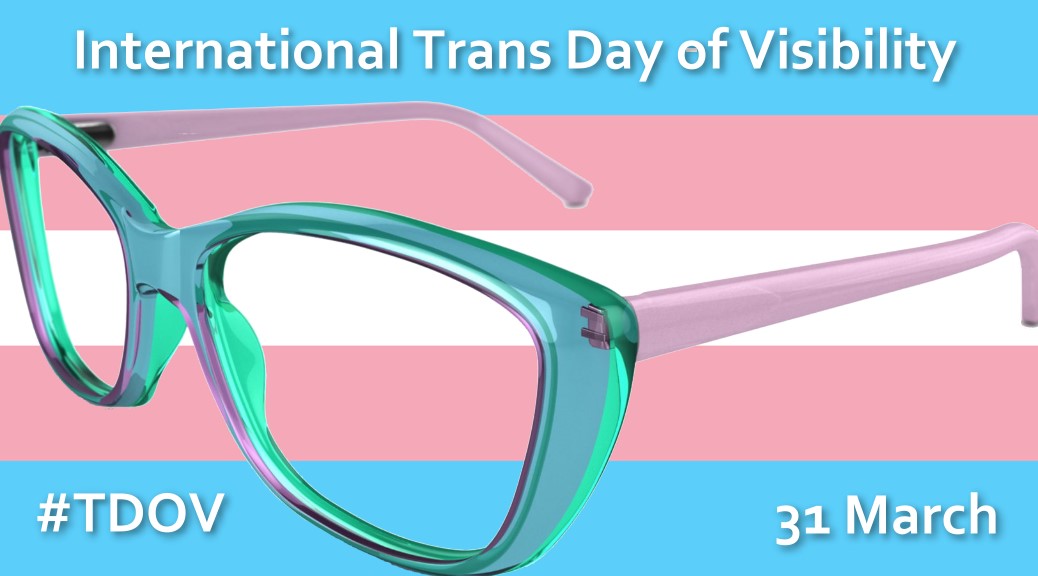
Norwich Reclaim the Night – Fighting for Safer Streets not Infighting
The third Norwich Reclaim the Night took place on International Women’s Day 2018, spearheaded by UEA students and young intersectional and international feminists. It was inclusive of trans and non-binary people, as well as men, focusing on safety for all not gender. Sex worker freedom from violence, intimidation and harassment was also signposted. This was feminism for all without any infighting or exclusion.
Rallying talks and emotive poetry (all with content warnings) raised the issues of violence against women, of “Yellow Peril” racism on the streets, of domestic and sexual abuse, of hate crimes, and of the need to take back and create safe streets for all. The evening began with a talk about Leeway domestic violence and abuse services and also fundraised for them.
“Many marches are women-only and sadly some groups have discriminated against trans participants… We came out to show that Norwich is no longer a place where you can be harmed or discriminated against for the colour of your skin, your faith, gender, sex, nationality or sexual orientation.” – UEA event organising group
March chants – and Poppy Rose was in good voice, included:
“Love, not hate
Makes Norwich great!”
and
“Claim our bodies
Claim our right
Make a stand
Take back the night!”
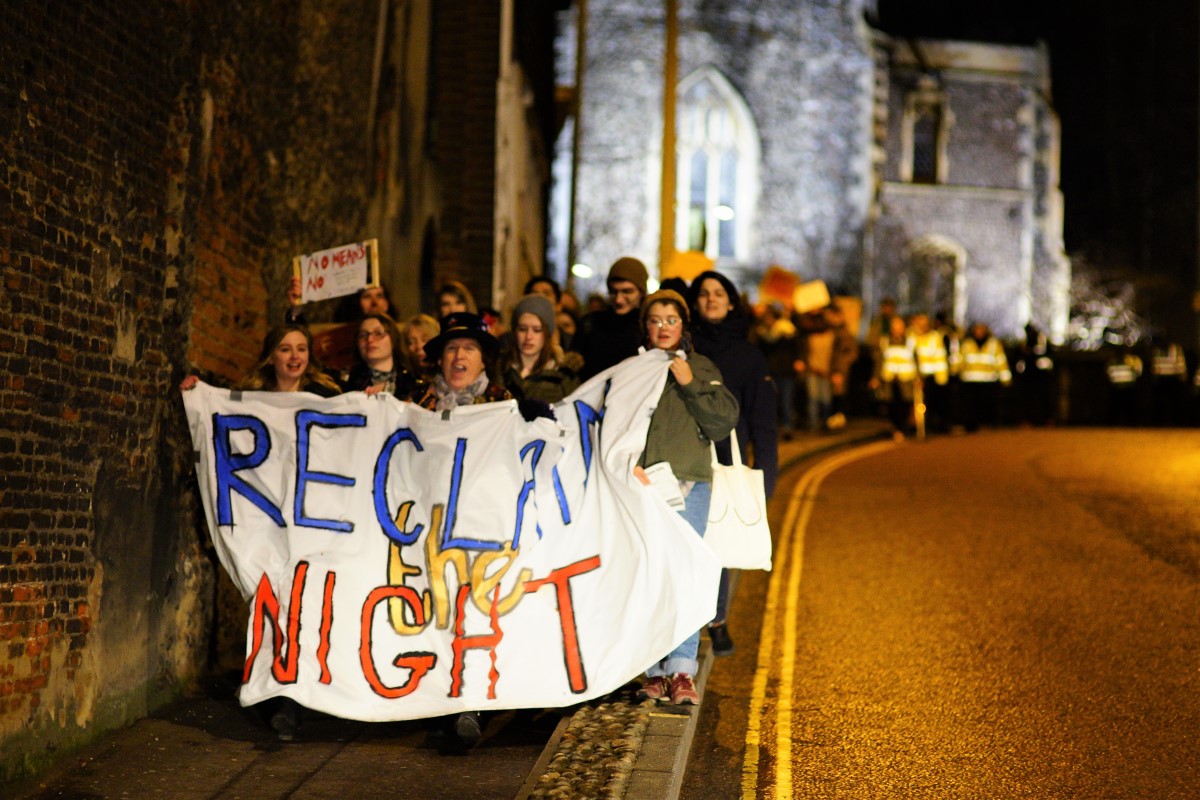
The march of some 50-plus people was one of solidarity, safety, and sensitivity, looking after the welfare of everyone involved, several of whom spoke of surviving sexual abuse or other forms of harassment.
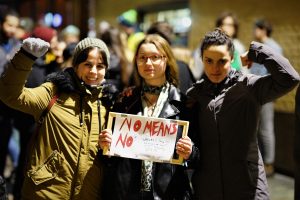
A number of young Spanish feminists found the event on Facebook, and were surprised more wasn’t happening on International Women’s Day whilst reflecting with sadness that they weren’t home in Spain during its first nationwide feminist strike of some 5 million women.
During the march, some dozen men on the streets asked me what it was about – there was no mockery but positive approval. Women standing in the queue for nightclubs gave us whoop-whoops as we passed, a couple of times cars honked their horns in solidarity.
This is indicative of how positive Norwich can be.
Unlike other Reclaim the Night events across the country, such as in London, which is considered a ‘women-only’ march, Norwich’s variation promotes an all-inclusive attitude towards supporting all individuals who may be affected by sexual harassment. Second year student, Ryan Jordan, who also delivered a speech and performed several poems, said,
“When I performed, my heart was pounding at first. But in the second half, I thought, ‘I’m with people who are amazing, and in Norwich you feel that you can do anything, unlike London…You’ve got a beautifully different array of people. It feels so safe. And UEA has always been very accepting. I feel okay being myself, and I feel that’s what Reclaim the Night is about.” – Ryan Jordan, as reported by Chloe Howcroft
As an invited speaker, for the second year running, I was loathed to draw attention to the issues of trans people, particularly trans women, and especially on #IWD, but current media headlines necessitated it and it was a safe place to do so given how inclusive an event the organising team had made it.
Here’s what I had to say:
Norwich Reclaim the Night 2018 speech
“Reclaim the night is an annual march … intended to reclaim bodily autonomy and space that is often stolen from us by gendered and sexual violence”
“All genders welcome. This is a sex-worker inclusive event, and we actively advocate for the decriminalisation of sex work. This is also an explicitly trans inclusive march. Given the chequered history of Reclaim the Night elsewhere in the country, we consider this vital to state clearly, and to do all we can to challenge the worrying rise of so-called radical feminism” – Brighton
“Boss babes see one another fighting for not with other women and systems.”
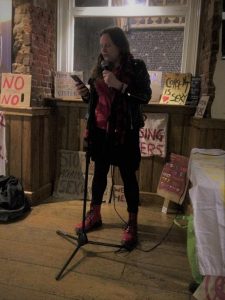
It is claimed that trans women mark the same level of risk to cisgender women as cisgender men do when in fact they are themselves at a higher risk of some types of abuse and attack (and ironically trans women as perpetrators of extreme violence pose a greater risk to men rather than women!)
The first attack, I mean “free speech debate”, that I saw in the media was timed to coincide with International Women’s Day and was by Judith Green of A Women’s Place UK calling it “transgender activists and the real war on women“.
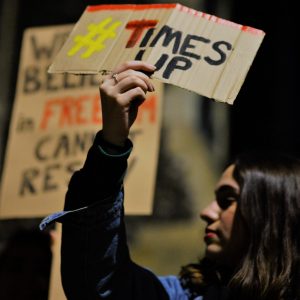
Not from a handful of trans people who in almost equal numbers now are traversing the gender divide and leaving biological birth essentialist determinism behind thus showing that neither the gender construct nor birth lottery need define you. Surely, that IS feminism?
Wonderful night! Thank you so much to everyone who showed up for #NorwichReclaimTheNight2018 and dug into their pockets to donate to @LeewayDV and to all the readers and speakers! A great inclusive way to mark #IWD
— Eli Lambe (@elisheepe93) March 9, 2018
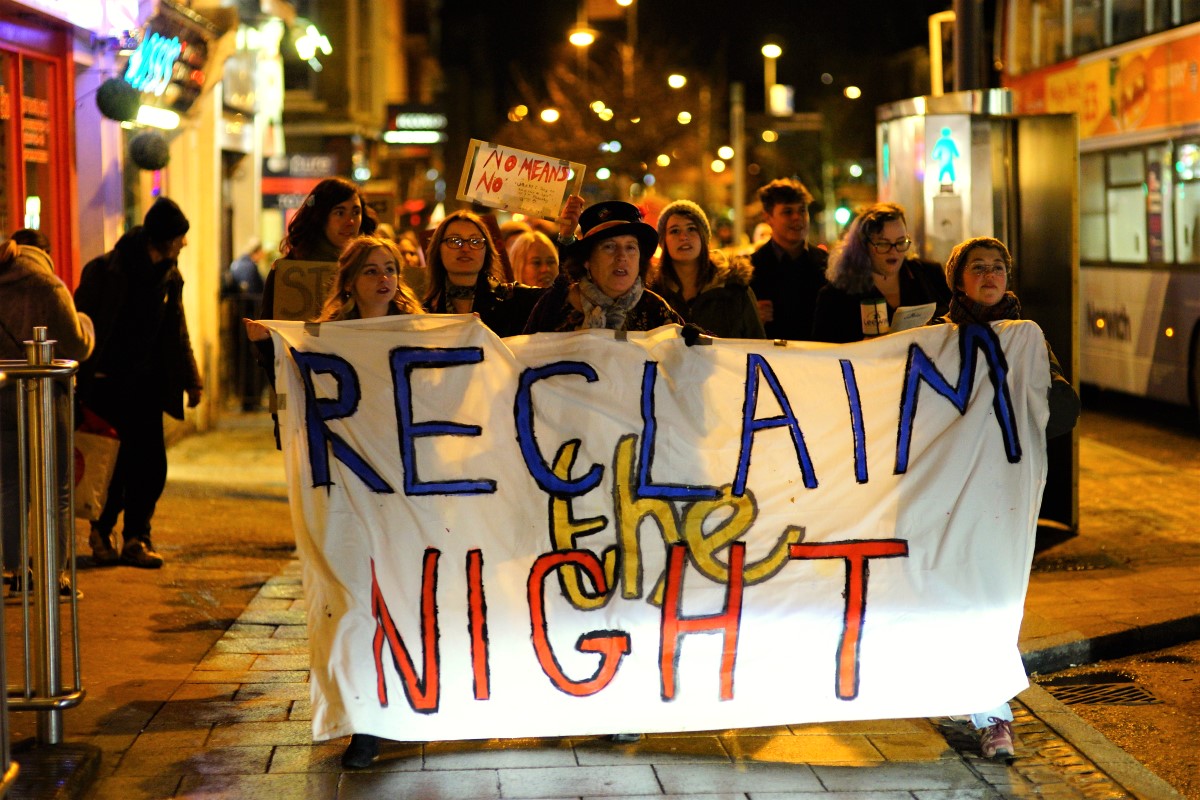
One Billion Rising, Norwich rises up to say Time’s Up on VAWG & DASV
[There are no apologies for what follows, on a day such as this, these things need to be called out, trigger warnings of statistics of abuse but no details of abuse]
Norwich Rising (EDP report), in its sixth year, is a part of One Billion Rising, founded by Eve Ensler in 2012 and celebrated usually on 14 February to combat and end violence against women and girls. In 1998, the V-day (Victory, Valentine & Vagina) movement grew out of her Vagina Monologues performances and a campaign to support domestic violence shelters and agencies. Art and activism come together to support female victims of abuse.
What follows is the text of my speech at the event. As someone born male, but now transitioned, and having been in both some amazing relationships and some abusive ones, I am always both honoured and ashamed to be invited to speak at these events. Honoured to be included, ashamed of what (mostly) men have done to women.
That these ‘Rising’ events take place on Valentine’s Day serves to remind us that not all love is loving; that on this day some people would be better off leaving rather than staying in their relationships, and that so much ‘romanticism’ can be coercive control especially when used with ill intent to prey upon the vulnerable.
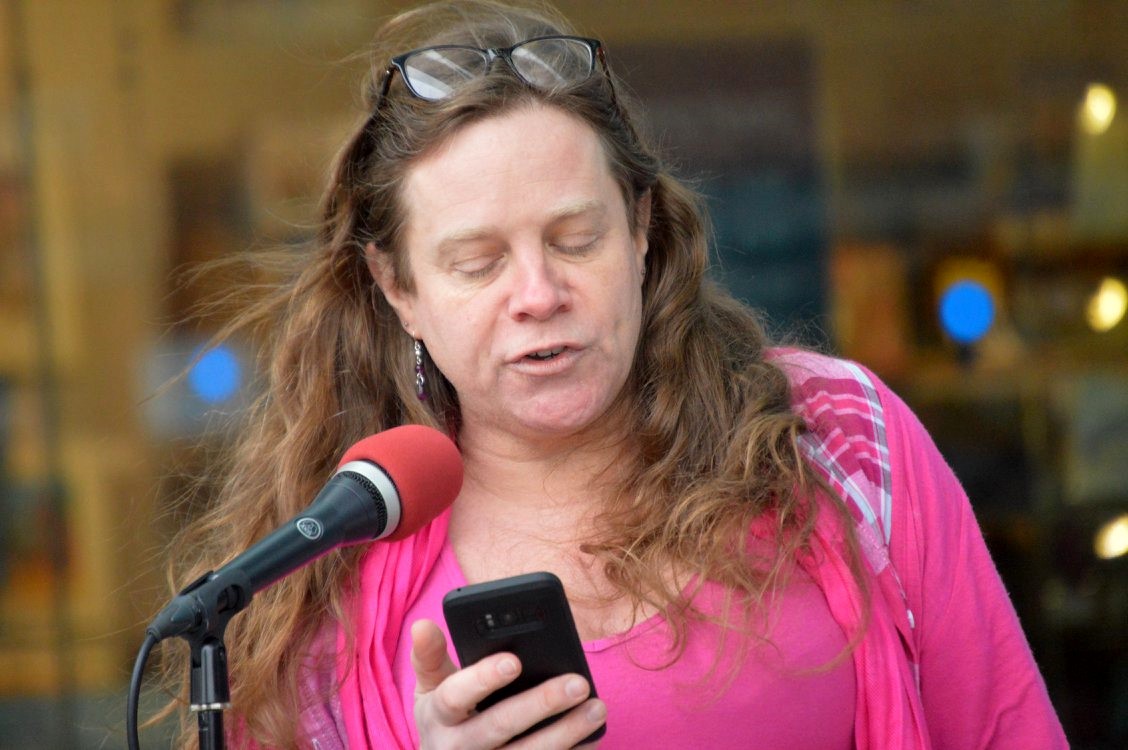
Text of Speech
Just walking up to the Norwich Rising event I overheard two guys describing a woman as a fat pussy. When we reduce people to their body parts, we dehumanise them and make abuse easier.This last year has been the year of Donald Trump and pussy hat women’s marches, the year of the #MeToo movement against abuse in the movies and media industry and the likes Harvey Weinstein, the year of the Presidents Club charity dinner for sexist dinosaurs, and just this week the boasting of the Philippine President of how he ordered the shooting of female rebels in the vagina because without one, women are useless.It’s also been the week of ongoing revelations in the charity sector, of Oxfam’s workers sexual exploitation in Haiti and other humanitarian agencies admitting similar; up to 10% of female workers abroad had been sexually assaulted or witnessed abuse. Even at home, there a 6 allegations a year of abuse in Oxfam shops.Every year we have events like this, we get asked “What about the men?” Yes they get abused, raped and killed too, but not nearly in the same quantity or severity. Of course we want to end violence and abuse against all people, by people of all genders. The reality, though, is that 3x as many women as men are killed in domestic situations. A third of the men are also killed by men and another third by women who had been abused by men. 15x more men than women are convicted of domestic abuse. Domestic abuse is massive, over a million women a year, 10% of all recorded crime, but only 10% are prosecuted, fewer still convicted. Half of women in prison are themselves the victims of domestic violence.People aren’t born abusers, they witness, repeat, and learn sexism from media stereotypes and scenes of graphic sexual exploitation and violence. We need to educate now not later in life. Consent and respect classes for pupils reduced rape offending rates by half in Kenya.The UK government just closed its consultation on the sex education – whilst the opt out is all but gone the way it is taught remains a grey area. It should be compulsory and standardised in all schools. It should not have taken till now to be teaching better attitudes to all, without exception.It may be Valentine’s Day but 75% of femicide murders are committed by current and former heterosexual partners, 75% in their own home and 90% by someone they knew. “Stranger danger” is rare. Nationally, nearly 200 domestic abuse victims are turned away from refuges each day. It’s time to fund services not cut them.It’s also been a year of challenge to trans women and whether they present a risk to women’s safe spaces. Of 4 support services I’ve spoken to in this region they are all trans supportive but also risk assess all service users and workers.Yes, 12 transgender spectrum people committed murders over the last decade, 7 victims were male, 4 female, and 1 was a trans on trans killing. Men are twice as likely as women to be the victims of transgender perpetrators of serious violence. Trans people are disproportionately likely to be victims.We can all twist statistics, and these figures mask different degrees of abuse, but 1 in 5 men face abuse within relationships, 1 in 4 LGB, 1 in 3 women, 1 in 2 trans people (mostly female-identified), but every one is one too many. Hashtag #TimesUp.It is time to stop violence against women and girls be it domestic, sexual coercion and violence, or ritualistic FGM. Misogyny, molestation, mutilation and murder of women and girls must stop.Don’t send a card for Valentine’s, send a message – NO MORE violence or abuse.I’ll end by quoting just two verses from the intersectional poem against sexism and racism by Maya Angelou:You may shoot me with your words,You may cut me with your eyes,You may kill me with your hatefulness,But still, like air, I’ll rise.Does my sexiness upset you?Does it come as a surpriseThat I dance like I’ve got diamondsAt the meeting of my thighs?
Gender, LGBTQ, BME, Disability – MPs Diversity in General Election 2017
Representation in UK Parliament
Just how representative of the UK population as a whole were prospective parliamentary candidates and elected MPs in terms of gender, sexuality, disability, religion and colour/race/ethnicity? 97 new MPs joined the house, and Ken Clarke MP was re-elected as its oldest member and Father of the House. It is well known that, hitherto, the UK had the most LGB ‘out’ Parliament in the world, but not the most gender balanced, how has that changed after Theresa May‘s snap general election?
Gender | LGBT+ | BAME | Disability | Religion | Education | Summary
Gender: Female MPs compared to Male MPs
2017 sees 208 female Members of Parliament, up from 191 in 2015 (196 after by-elections). There were many seats where both the main candidates standing were female. 29% of candidates were women, 32% of those elected were – both records for the UK but not the world.
We were 46th in the world tables, we are now 39th. Guess who is first? Rwanda with 61% women, second is Bolivia with 53%. All others are less than 50%. Sweden (#6), Finland (#9), and Norway (#12=) are the top European nations, all Scandinavian. The first Western European nation is Spain at 14th and Belgium at 19th. Germany is 22nd but France 63rd! At this rate, 2062 would see gender balance in the UK Parliament.
Labour fielded 40% women, the Green Party 35% (statistically, of course, 100% of their MPs are female!), UKIP had 13%. Of those elected, there is wide variation among the political parties. Labour have 45% (119) and their leader in Scotland but never England (except as caretaker). Meanwhile, there are just 21% (67) among Conservative MPs despite a history of two Prime Ministers and their leader in Scotland.
Interesting that the DUP, the Conservatives in Scotland, and the Tories in England and Wales are all led by right-wing women, one of whom is anti-gay, another is gay, and another shifted to same-sex equality (through persuasion by a female LibDem MP) after a prior voting and campaigning record against it. Being a woman, it seems, is little impediment to political power in the UK. Indeed, add in Plaid Cymru, SNP, and for two weeks, even UKIP, only Labour (England and Wales) and LibDems haven’t been led by a woman.
Being female is no guarantee that one will hold pro-equality, pro-LGBT views. We now have a triumvirate of female-led parties forming a “confidence and supply” alliance to keep the Tories in power that may be in breach of the Good Friday Agreement.
LGBTIQ Sexuality & Gender Identity
With 45 openly LGB MPs (19 Tory, 19 Labour, 7 SNP) that’s also a record and 6 up from 2015 – at 6.9% that’s close to the supposed 6% openly LGB numbers in the population (much higher among young people, of course). None among the 12 LibDems, though their female MPs balance at 4 out of 12 is somewhat restored.
Seven Trans and two Non-Binary candidates stood (just 4 in 2015, so, more than doubling) but none were elected, several have stood in council elections before. Eddie Izzard continues to hint that he may stand as an MP.
UK LGB MPs are the highest proportion anywhere in the world. We have the most rainbow Parliament – quite an affront to the homophobic DUP with whom 19 LGB Tory MPs may now have to do electoral business with.
Since 4.5% of the people standing for election (147/3304) were openly LGBTQ, it means that LGB candidates are up to 1.5x more likely to win. Tories and Labour had 7% LGBT candidates, SNP 17% and 20% of their elected MPs, despite reduced numbers. Surprisingly, only 2% of Greens (same as UKIP!) and 4% of LibDems were. White gay men outweigh any other LGBTQ demographic 5x and are the most likely to be elected. Curiously almost zero LGBT candidates stood in Greater East Anglia! There’s an opening for me yet 😉
Black, Asian and Minority Ethnic MPs
Of the 147 LGBTQ candidates, just one was BME, in 2015 that was two – both shamefully low, though we don’t know the number of non-out candidates. However, 51 BME MPs were elected on 8 June – an increase of 10. At 7.8% this is just over half of the 14% general population representation.
Britain also elected its first MP of Palestinian heritage as Layla Moran for the LibDems “overturned a Conservative majority of almost 10,000 votes to win the Oxford West and Abingdon. Moran won the closely contested election by only 816, gaining 26,252 votes.”
Disability Representation
Just four openly physically disabled MPs were elected, 0.6% of Parliament, compared with 16% of the UK. Mental health is so stigmatised, one wonders if it were possible for someone to be ‘out’ with a diagnosed long term condition and an MP, other than depression and anxiety that affect 1-in-4 of us, and undoubtedly affect MPs similarly. It would be great to see a bipolar MP, to show it is possible to manage a bipolar life.
Religion
The new Parliament sees the UK’s first female Sikh MP, Preet Gill and its first turbaned male Sikh, Tanmanjeet Dhesi. Both are Labour MPs. In the past we’ve had 5 Sikh MPs in the last 15 years but never wearing a turban in the House of Commons.
In the wake of the Manchester concert bombing, it is perhaps significant that the city elected its first Muslim MP, Afzal Khan – who was also ten years ago their youngest and first British Pakistani and Muslim, Mayor of Manchester.
Education
It shouldn’t matter, but it is interesting nonetheless with accusations that the Tories were run by the Eton and Bullingdon Club set, and even many who stood as Labour leader being Oxbridge educated.
The Sutton Trust believes that 51% of MPs were educated in comprehensive schools, and just 29% at public schools (ie privately educated). It is still disproportionately biased to private education, therefore.
Summary
In conclusion, our LGB representation continues to be the highest in the world, across the three largest parties – but not elsewhere, and close to the assumed proportion of the general population. Several Trans, Non-Binary and similar, stood but at 9 out of 3300, they are about 10x underrepresented in standing, and to date unelectable; are they being stood as no-risk candidates in unelectable areas, that’s an analysis I’ve not done yet. On gender, we are getting there slowly, but ranking 39th in the world is a poor result, albeit an improved one. Realistically with parenting issues, 45% of Parliament would be a good showing for women, rather than the 32% we have. BME and disability remain woefully underrepresented. How a Tory deal with the DUP, who are anti-diversity on just about every count, can be squared with Parliament and the electorate’s ever-progressive diversity, remains to be seen.
IDAHOBIT Day needs further evolution to combat Non-Binary enbyphobia
IDAHO has become IDAHOBIT Day
Happy IDAHO – IDAHOT – IDAHOBIT Day, perhaps now IDAHOBNoBIT Day! For the International Day Against Homophobia, Biphobia and Transphobia, needs further evolution to embrace the increasingly prevalent eNByphobia (Non-Binary).
In the last few months, I both started a non-binary meetup and discussion group and also witnessed increased enbyphobia – mainly online. That it is coming from people whom you would otherwise expect to be intersectional and LGBT+ allies is worrying.
It has come from the same feminists and others who oppose transgender women (mainly) but also trans men (erasing butch lesbians, apparently), as well as from some 50-something gay men and women, and even trans women in the public eye such as India Willoughby.
Piers Morgan
Good Morning Britain‘s Piers Morgan seems to be the go-to bigot/Kelvin Mackenzie on all things offensive these days, despite saying he accepts trans people and their rights – so long as they’re not non-binary. Last week, he mocked Emma Watson after she accepted MTV’s first ‘gender neutral’ acting Award. This week it’s non-binary trans persons Fox Fisher and Owl Stefania who he argued were just talking gobbledygook and he could just declare himself a black woman or an elephant and demand elephant rights to be given a room at the zoo.
Piers took to mockery, yesterday, too:
I am now identifying as a black non-binary 4ft astronaut. @GMB
— Piers Morgan (@piersmorgan) May 16, 2017
“It’s an all girls’ school in this country and in one year, there are now eight non-binary students who do not identify as girl,” he said. “I think that’s dangerous. It’s creeping and it’s creeping fast. I don’t think that’s right.” – Piers Morgan, describing his friend’s daughter’s school
Non-Binary “not a thing”
The irony that some feminists who oppose gender roles and see it as a social construct would turn round and say that non-binary doesn’t exist, “it’s not a thing”, there are only two sexes and gender is social, seems somewhat biologically essentialist and reductive. Not to mention, only true to a limited extent. Yes, most babies take 2 differently sexed parents to be conceived, although 3-parent babies are now possible.
Some people can also be intersexed, as many as 1.75% of people. These can include dozens of chromosome and endocrine variations producing differences in primary and secondary characteristics. Genetic sex chromosomes are far from limited to X and Y, since around 20 viable combinations from XO to XXXXY and XYYYY can occur. Perhaps, the ‘I’ in IDAHOBiT should be for Interphobia and not Biphobia?
I’ve done a lecture at SOAS and UEA universities titled “Around the World in 80 Genders” looking at non-Western interpretations of “third gender” identities. Afterwards, I often get asked, “just how many genders are there?” My usual reply is, “around 7 billion”. Gender, and even sex, is more dissimilar than it is stereotypically binary.
Non-binary people don’t know their sexuality
Just this week, I’ve been told that as I’m non-binary or even wrongly misunderstood to be genderfluid, there’s a small chance that I may be heterosexual, either all the time or some of the time. As a result, I should not be invited to speak at LGBT events. The same surely applies to trans people – who can be non-binary too.
Surely, our issue is a common oppression, not an identical gender or sexuality identity? We are intersectionally united by not being a part of cis heteronormativity and the freedoms and rights that brings but which those who are different may not enjoy to the same extent.
When it comes from binary LGBT folk it is especially galling that our brothers and sisters are engaging in intra-community division and discrimination.
International Day Against Homophobia
The annual, since 2005, IDAHO Day celebrates the 1990 removal of homosexuality from the WHO’s International Classification of Diseases (ICD). That it took 17 years from the American Psychiatric Association’s (APA) initial tentative removal of homosexuality from the Diagnostic and Statistical Manual of Mental Disorders (DSM) demonstrates how long change in these areas can take. Aspects of gender dysphoria including autogynephilia (sexual arousal by thoughts, images of self as a female), autoandrophilia, and transvestic disorder, “unwanted” same-sex attraction, and even asexuality remain in the DSM and ICD.
May 17 was first known as the “International Day against Homophobia” and mainstreamed through its acronym “I.DA.HO”.
In 2009, Transphobia was added explicitly in the title of the name, in the recognition of the very different issues at stake between sexual orientation and gender expression. “IDAHOT” became another popular acronym used alongside the initial one.
Since 2015, biphobia is added to the title, to acknowledge the specific issues faced by bisexual people. A new acronym, IDAHOBIT, has started to be used by groups in Australia and the UK mostly. To acknowledge this diversity, we use increasingly all three acronyms in our communications.
Wherever we can only use one acronym, we favor the acronym IDAHOT, as being the one most in use at global level*
To ensure even more inclusion and reflect the diversity of sexual and gender minorities, we have created at global level the baseline “A global celebration of sexual and gender diversities”. This is probably the only “solution” to the issue of inclusion and reflection of other diversities, such as Queer, Asexual, Pansexual and regional identities such as Hijras, Weres, Two-Spirit, etc. – IDAHO
State sanctioned sexism & murder in High Heels to continue
Ban on sexist forced workplace dress codes abandoned
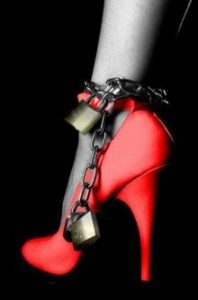 The Government has backed down from enforcing a review of the law regarding workplace dress codes where they discriminate on gendered lines, such as requiring makeup, skirts and high heels for women but only clean shaven, suits and flats for men.
The Government has backed down from enforcing a review of the law regarding workplace dress codes where they discriminate on gendered lines, such as requiring makeup, skirts and high heels for women but only clean shaven, suits and flats for men.
“Forcing women to wear high heels at work is medieval – and no better than calling us witches” – The Daily Telegraph
Instead, the Government says that existing equality legislation is sufficient to the task so long as men are required to dress to an “equivalent level of smartness“.
Equivalent level of smartness
A Government spokesperson said:
“No employer should discriminate against workers on grounds of gender – it is unacceptable and is against the law. Dress codes must include equivalent requirements for both men and women.”
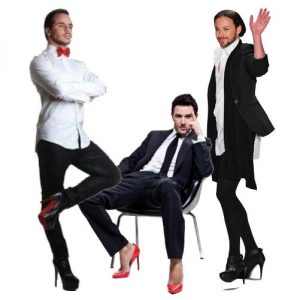 Equivalent? What would that look like in reality if applied in the workplace or tested legally? Men in ballet pumps, cramping their feet and allowing them to stand en pointe to reach the tallest shelves at work? No baggy suits, only tailored ones to every pectoral muscle, firm behind or indeed bulge, looking like someone from the Chippendales before the striptease music begins? Perhaps, the phraseology should be an “equivalent level of sexualisation”.
Equivalent? What would that look like in reality if applied in the workplace or tested legally? Men in ballet pumps, cramping their feet and allowing them to stand en pointe to reach the tallest shelves at work? No baggy suits, only tailored ones to every pectoral muscle, firm behind or indeed bulge, looking like someone from the Chippendales before the striptease music begins? Perhaps, the phraseology should be an “equivalent level of sexualisation”.
Nicola Thorp, PwC and Piers Morgan
PricewaterhouseCoopers (PwC) briefly employed Nicola Thorp as a front facing receptionist temp, but sent her home when she came to work in flats not heels. It set off a petition attracting 150k signatures. When it came to her being interviewed by Piers Morgan on ITV’s Good Morning Britain she acquitted herself brilliantly against the sexist Piers Morgan who said:
“If you’re the gatekeeper to meetings and you’re taking very important clients with besuited guys (oh and er women and whatever)…is it actually sexist for the company to say ‘we’d like you to look fantastic as well and to look glamorous and wear heels and set a kind of whoah'”.
“Certain jobs, I don’t think it’s unreasonable for them (the employers) to say we don’t want you in flats showing visitors around.”
Thorp replied “High heels are designed to make women look sexier not more professional. Piers was rightly slammed by viewers after his sexist suggestions.
Piers donned a pair of silver high heels for an appearance on Loose Women afterwards, to which Twitter responded again:
piers morgan wears heels for like 10 mins while sitting down, sexism is over(!!!) https://t.co/ERZjaokDRS
— jayney ☀ (@jayney) January 30, 2017
High Heels Healthy?

Health and Safety alone would ban High Heels in continued usage, as indeed the NHS does. Evidence suggests that wearing them can lead to osteoarthritis.
“Wearing high heels when you go out in the evening is unlikely to be harmful. However, wearing them all week at work may damage your feet, particularly if your job involves a lot of walking or standing.” – NHS Preventing Heel Pain
“High heels aren’t glamorous, they are physically damaging and requiring women to wear them is sick” – The Daily Telegraph
Theresa May’s Kitten Heels
Theresa May’s footwear has long been noticed, and she is no kitten as her predatory early election calling has shown.
Even when paired with skirt suits and high cut tops, the Daily Mail‘s “Who won Legs-it” headline focus shows where the eye, the attention, and the comment goes…
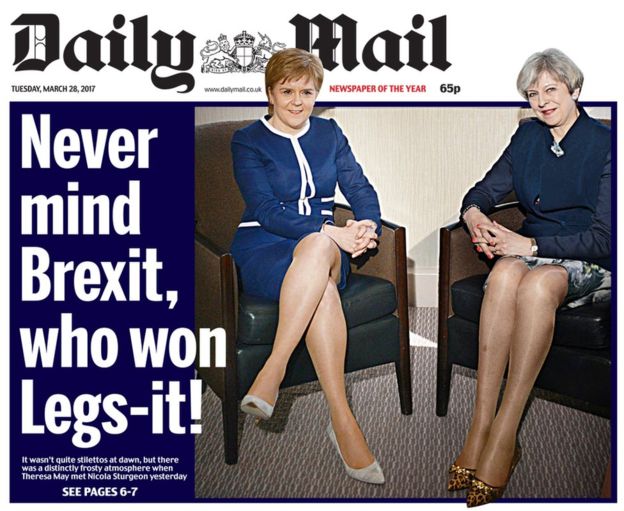
Well heeled History
High heels were originally worn by men and women – of status, hence the expression “well-heeled” indicating wealth, and in Europe, at least, can be traced back to the 16th century. In the late 17th century “King Louis XIV of France decreed that only nobility could wear heels, and that only members of his specific court could wear red ones!” Christian Louboutin eat your heart out, or perhaps your ‘sole’.
Oppression or Empowerment?
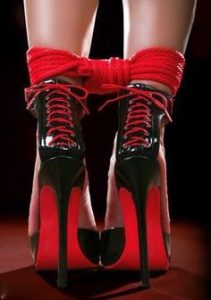 Why are high heels such a simultaneous symbol of oppression, femininity, power and domination? Can high heels be reclaimed as empowerment, not oppression?
Why are high heels such a simultaneous symbol of oppression, femininity, power and domination? Can high heels be reclaimed as empowerment, not oppression?
Like anything, it’s about choice. Feminism is about choice. Equality is about men and women having similar choices. Wearing high heels should be a choice – except on a hospital A&E ward or a building site.
